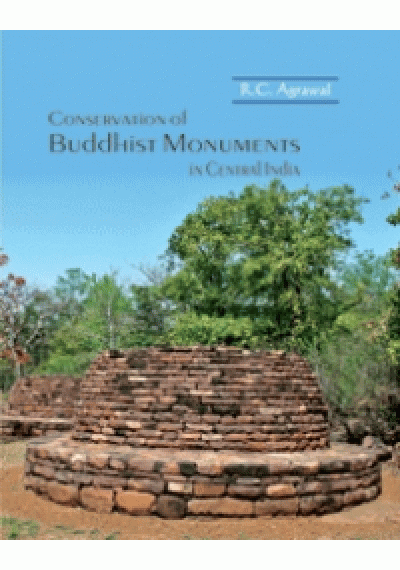PUBLICATION DETAIL

Conservation of Buddhist Monuments in Central India
| Author | : R.C. Agrawal |
| ISBN | :978-93-83221-05-9 |
| Price | : |
| Size | :29 cm |
| Year | :2015 |
| Format | :Hardbound |
| Description | :xviii+162 p., 49 figs., 62 col. & 126 b/w illus., Appendix, Bibliography, Index |
| Qty |
About the Book
The Buddhist site of Sanchi was discovered by General Taylor in 1818 for the educated world. But the memory of Sanchi as a Buddhist establishment was alive till 1728 when Dost Mohammad founder of Bhopal dynasty admonished his brother Aqil for desecrating a Buddhist statue in Sanchi. This emphasises that the memory of Sanchi did not die but survived. In spite of desertion of the site by the Buddhist monks towards the end of seventeenth century and movement of monks towards western side of Malwa, Sanchi was in know of the people. The authentic description of Sanchi appeared in 1819 and it became known to the western world. From 1818-1851 no substantial investigations were carried out. In 1852, unsystematic excavations were carried out by Alexander Cunningham at Sanchi and other sites (Sonari, Satdhara, Bhojpur-Pipaliya and Andher), but no initiative was taken for the preservation till 1912. Between this period of half a century, more damage was caused to the Sanchi in the name of restoration and other sites suffered. John Marshall initiated conservation at the request of Bhopal state and the results of these operations were published in 1940.
The fate of other sites in terms of survey, excavation and conservation remained neglected. In 1991 efforts were made to survey these Buddhist sites again along with Sanchi, which thrived more than fifteen hundred years. The survey of Satdhara and Bhojpur-Pipaliya revealed many facets of these establishments which had remained in oblivion for one and a half century. The present study deals with the survey, excavation and conservation. Much more work needed to be done around these sites. Hope future archaeologists will take it forward what has been done in the last fifteen years.
About the Author
Dr R.C. Agrawal (b. 1947) joined Archaeological Survey of India in 1972. He explored and excavated a number of sites in various parts of the country. He also participated in excavations at Purana Qila, Delhi; Mathura and conducted excavations at Hampi in Karnataka in the year 1979-80. During 1985-1990, he explored Buddhist sites in Ladakh region and carried out excavations at Tisseru stupa. In 1992, he identified the Buddhist site of Satdhara for large-scale conservation and excavation in Madhya Pradesh. He initiated the conservation of number of monuments in Madhya Pradesh. He has been closely associated with many academic bodies and has published research papers on art, archaeology, paintings and rock art. He is widely travelled and member of ICOM, ICOMOS and other academic bodies.
In his career he has served as Director (Monuments), Joint Director-General, Institute of Archaeology, Member Secretary, Indian Council of Historical Research, Pro-Vice Chancellor, National Museum Institute and Professor of Museology, Principal Director, Architecture Heritage Division, INTACH. Presently, he is a visiting faculty to Architectural Conservation Department (SPA), Institute of Archaeology, Archaeological Survey of India, National Museum Institute and President of Rock Art Society of India.






